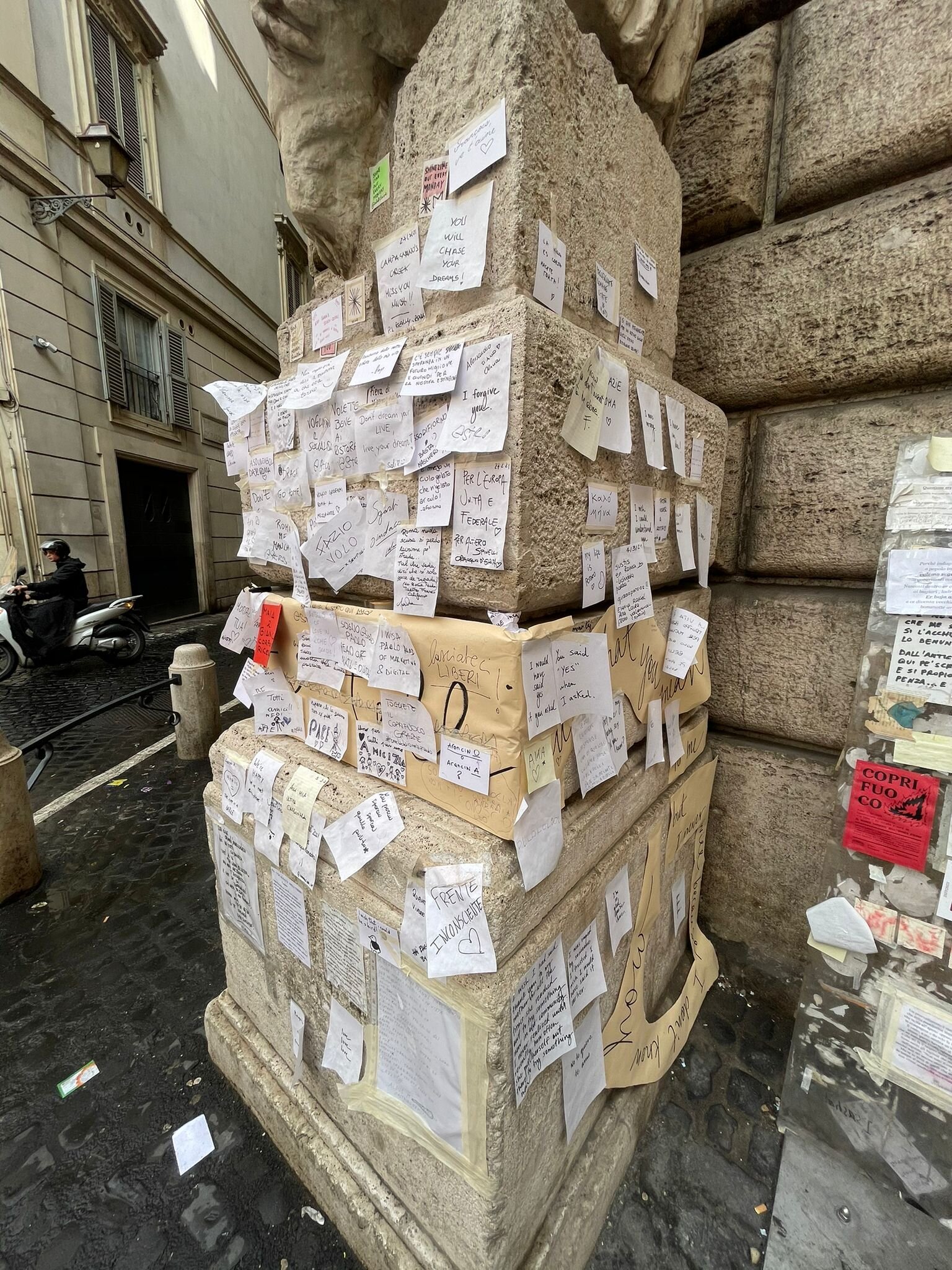
Rome, Italy
February 2021.
Pasquino
Pasquino refers to a statue dated between 250-150 B.C. and excavated in Rome at the turn of the 16th century. Located at the southwest corner of Palazzo Braschi in the Parione neighborhood of Rome, the Pasquino has long served as a site for the expression of political dissent in the city. During the Renaissance, inhabitants of Rome began to post satirical poems and epigrams, or pasquinade, on its pedestal, voicing anonymous critiques of the church and artistocracy. Soon after, other “talking statues” appeared throughout the city, often activated in response to the authorities’ shutdown of the Pasquino, giving rise to a material yet ephemeral form of resistance. The Pasquino continues to serve as a site for dialogue and the voicing of discontents by city inhabitants today, in a civic ritual that has spanned two millennia.
When I arrived in Rome in February 2021, I was struck by how empty the city felt. The Pasquino in particular felt abandoned, lonely, muzzled. I had seen the statue with varying levels of public engagement, but never stripped bare, silent. As I considered the historical context of the Pasquino, I began to consider its connection to this project.
How might interpersonal silences relate to political discontents? How does loneliness figure in the rise of totalitarianism? What is the role of silencing in the exercise of power, both political and interpersonal? What are the cumulative, collective effects of words unspoken?
Image source: Metropolitan Museum of Art
grazie in particolare to M — installation assistant, videographer, and keeper of secrets.















